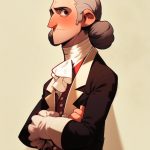
Rewritten Article
This is the first article in a new series that explores the influence of fairy tales on some of our favorite classic novels. We’re starting with Jane Austen’s beloved “Pride and Prejudice” (1813).
Darcy and the Beast
Have you ever considered that “Pride and Prejudice” shares the same plot structure as “Beauty and the Beast”? Let’s take a closer look at the similarities between these two stories:
1. Two people meet under unfortunate circumstances and initially dislike each other.
2. He starts to develop feelings for her, but she continues to dislike him.
3. He makes a romantic gesture or proposal, which she rejects.
4. He does something genuinely loving or lets her go.
5. She realizes she loves him when it seems too late.
6. Love leads to a transformation.
Comparing with “Beauty and the Beast”
– Beauty is essentially sold to the Beast and initially dislikes him. The Beast appears mostly angry.
– In modern versions, the Beast’s feelings are more apparent. Even in older versions, the Beast often gives Beauty gifts, knowing he needs her to break the curse.
– The Beast proposes to Beauty, sometimes occurring every night in older versions, or delayed for dramatic tension in modern retellings.
– He lets Beauty return to her sick father, despite knowing her absence may lead to his demise.
– Beauty finds the Beast dying, confesses her love, and agrees to marry him.
– The Beast transforms back into a Prince.
“Pride and Prejudice”
1. Elizabeth and Darcy meet at the Netherfield Ball, but neither is impressed with the other.
2. Darcy’s feelings for Elizabeth subtly change as he compliments her “fine eyes” and interest in reading, though he still looks down on her social standing.
3. Darcy proposes with “You must allow me to tell you how ardently I admire and love you,” but Elizabeth rejects him with, “You could not have made me the offer of your hand in any possible way that would have tempted me to accept it.”
4. During the Lydia/Wickham crisis, Darcy seeks out Wickham and arranges his marriage to Lydia, showing genuine care for Elizabeth’s family.
5. Lady Catherine de Bourgh’s visit and explicit forbidding of the marriage to Darcy makes Elizabeth realize her inclinations towards him. When Darcy proposes again, she accepts.
6. Elizabeth’s view of Darcy completely changes. She defends him to her father, stating she loves him and knows his true character.
Other Comparisons
The concept of a daughter being ‘sold’ to a husband she hasn’t met, expected to share her life and bed with him, mirrors the arrangement in “Beauty and the Beast.” This reflects the marriage market in “Pride and Prejudice,” highlighted from the first sentence: “It is a truth universally acknowledged, that a single man in possession of a large fortune, must be in want of a wife.” Mrs. Bennet’s life revolves around getting her daughters married for financial security and independence, sometimes at the cost of happiness and respect.
Charlotte Collins (formerly Lucas) accepts Mr. Collins, believing “Happiness in marriage is entirely a matter of chance.” Lydia’s imprudent marriage soon results in indifference. Lizzy’s fortunate enough to find love, financial stability, and mutual respect with Darcy.
In our next article, we’ll explore the fairy tale elements within “Jane Eyre.”
What about you? Do you see the resemblance between “Pride and Prejudice” and “Beauty and the Beast”? Can you see this plot structure in other romance stories?

